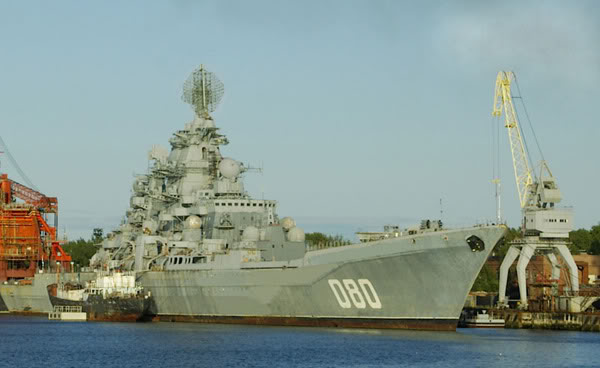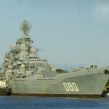
Russian Defense Ministry Creates New Military Science Council
Publication: Eurasia Daily Monitor Volume: 8 Issue: 95
By:

On May 4, the official Russian defense ministry publication, Krasnaya Zvezda, reported that in late April the first meeting of a new military science council was held in Moscow. Yevgeniy Podzor outlined the first session of the newly formed Council on Scientific and Technical Policy (SNTP), which he linked to a discussion of the problems of innovation in military and dual-use technologies. The Chairman of the SNTP, Duma deputy and former First Deputy Defense Minister Andrei Kokoshin, explained that the new structure was formed to assist the defense ministry in developing innovations for the armed forces as well as helping on issues of military-technical and military policy. Kokoshin also stated that the development of dual-use technologies to strengthen the security of the country and promote national competitiveness will be the key priority of the SNTP (Krasnaya Zvezda, May 4).
The new council may prove to be a paper shuffling body offering support for decisions reached at a political level. Defense Minister Anatoliy Serdyukov ordered its formation within a specific context that could mark an effort to reverse negative trends in Russian military science. The context is the speech delivered on March 26 to the Academy of Military Sciences by Army-General Nikolai Makarov, the Chief of the General Staff, highlighting the degradation of military science in Russia, which had resulted in a lag of twenty years behind the leading foreign militaries. Makarov condemned the General Staff and the Academy of Military Sciences for allowing such a drift to occur, and called for urgent attention to this vital area in order to support the transformation of the armed forces (EDM, April 5, 6).
On April 21, Serdyukov ordered the formation of the SNTP headed by Kokoshin. According to Kokoshin, its purpose is to “render assistance to the defense ministry leadership in the development of innovation activity in the Armed Forces and in the drafting and implementation of decisions on issues of military-technical and military policy.” It acts, therefore, as a consultative body to the defense ministry, and prepares recommendations to improve defense legislation. The SNTP also provides scientific support for political-military, military-strategic and military-historical problems of ensuring the Russian national and international security. Furthermore, it develops a conceptual basis for introducing the latest achievements of science and engineering into the armed forces (Interfax, April 21).
The council will examine the requirements of the armed forces in terms of the arms and special equipment developed and manufactured domestically and will draw up research proposals to improve scientific research and educational work in the defense ministry. Kokoshin told Interfax that the SNTP will facilitate closer cooperation between the defense ministry and Russian scientists and specialists from the Academy of Sciences (RAN) as well as other organizations and departments adding, “A significant part of the new council’s work will be devoted to long-term, prospective issues of the scientific-technical equipping of Russia’s Armed Forces and to Russian military policy, including beyond the limits of action of the recently-approved, new Russian State Arms Program [Gosudarstvennaya Programma Vooruzheniya –GPV] for the Period 2011-2020” (Interfax, April 21).
Leading Russian scientists and specialists were brought into the SNTP, including three former vice-presidents of the RAN, Aleksandr Aseyev, Anatoliy Grigoryev and Nikolai Laverov; Academician-Secretary of the RAN Department of Energy, Machine-Building, Mechanics and Control Processes, Academician Vladimir Fortov; and the rector of the N.E. Baumann Moscow State University, Professor Anatoliy Aleksandrov. The SNTP will involve specialists in strategic, military and defense industry issues drawn from the alumni of the Security Council, armed forces and intelligence services (Rossiyskaya Gazeta, Interfax, April 21).
In Krasnaya Zvezda, the day after its official formation, Viktor Ruchkin placed the work of the council in the context of naval modernization, highlighting statements by Prime Minister Vladimir Putin promising brighter times ahead for the Navy. Indeed, Ruchkin again turned to the SNTP chairman who confirmed that United Russia deputies, together with leading experts and scientists, are working on proposals to adopt the latest technologies for military and civilian ship building and improve the combat capability of ships, task forces and naval fleets. Kokoshin stressed that this centers upon using composite materials, developing hydro-acoustics, noise reduction and electronic warfare capabilities. “The creation of fifth-generation nuclear submarines calls for a unified hull such as that used for both a multi-purpose submarine and a strategic submarine missile carrier. The ‘Rubin’ and ‘Malakhit’ design bureaus, which today specialize in creating strategic and multi-purpose submarines respectively, are both working on this,” Kokoshin said. These submarines will make less noise, possess automated command and control, a safe reactor and long-range weapons. Kokoshin noted the intricacy involved in this work demanding “complex mathematical modeling and the use of the powerful super-computers that exist in our country” (https://www.redstar.ru/2011/04/22_04/3_01.html, April 22).
This naval theme to the work of the SNTP resurfaced in Krasnaya Zvezda on May 4, which stressed that money assigned to the modernization of the armed forces to 2020 will allow the in-depth over-hauling of the Admiral Lazarev Heavy Nuclear-Powered Missile Cruiser (Pacific Fleet) and the Admiral Nakhimov Heavy Nuclear-Powered Missile Cruiser (Northern Fleet). This was contrasted with the construction of Petr Velikiy at a time when insufficient funds were available. Kokoshin believes that modernizing the Lazarev and the Nakhimov will allow these to become more universal platforms with new strike weapons, including air defense assets, possessing missile defense capabilities as well as new systems for electronic warfare, reconnaissance, combat command and control, and hydro-acoustics. The superstructures can be built from mainly carbon fiber-reinforced plastic, increasing the stability and habitability of the ships in terms of deploying strike and auxiliary systems. Their visibility will be reduced and survivability enhanced, in Kokoshin’s view (Krasnaya Zvezda, May 4).
Reversing the past twenty years of degradation of Russian military science will not be achieved either by decree or within a short timescale. Equally, it has proved necessary to create the council after formulating the GPV (Nezavisimoye Voyennoye Obozreniye, April 29). Its creation, however, may denote the beginning of a long and no doubt meandering path to a forward looking research basis. Yet, the overly bureaucratic nature of the body and the backgrounds of its key individuals, particularly those linked to the defense industry, may limit its effectiveness. Unless such councils encourage and foster critical thinking rather than made-to-order reports, Russian military science will continue failing to meet the demands of reform that is currently intellectually moribund.




